The release systems
This is to keep the rocket on the base until it is launched. Of many systems have been designed for this function and we will not be probably not exhaustive in the descriptions which follow by going from the simplest to the most complicated:
The cork or rubber stopper,
Already seen previously, ensures both sealing and retention, by friction. It’s extra simple, but we cannot guarantee how pressure the rocket will leave, nor when.
It's a start to trying your hand at the water rocket, but it will be necessary to pass very quickly to a more secure solution.
The fork or key.

To control the moment of the rocket's departure, we can add on the base, 4 pitons in which will slide a metal U (called either the fork or the key) as opposite. This system described on Hervé Brégent's site (which unfortunately no longer exists) is very simple and inexpensive. The figure on the left is taken from this site.
The rotary lug

On an axis parallel to the launcher tube, a lug is positioned on the
flange of the bottle. By rotating the axis, the lug does not overlaps
the collar more and frees the rocket.
In practice, it will be more safe to put 2 lugs arranged
symmetrically to prevent the bottle from getting askew under the
effect of pressure forces and thus creates a leak or a premature
departure.
The photo below shows an example.
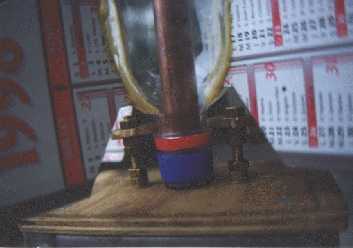
The "Garden hose quick coupling" system
As its name suggests, it uses a male end cap on the rocket quick hose coupling, which therefore constitutes the nozzle(see the Nozzle page), while the female end is used as restraint system.
This is the system that is used on the "Lanoë" ramp below and extensively described in the book "Construisez et lancez des fusées à eau "By Ivan Lanoë Edition Dunod ISBN: 2 10 006988 8.
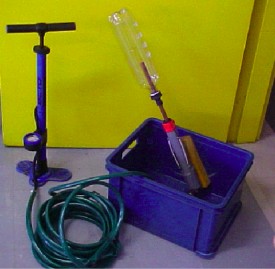
The « Clark Cable Tie »
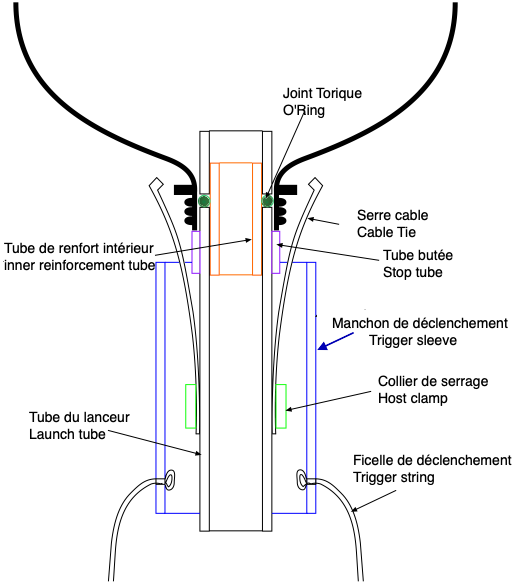
The name comes from its inventor: Ian Clark (his site: http://www.smoke.com.au/~ic/water-rocket.html, no longer updated) and the fact that its release system is based on the use of cable tie.
It is in fact the same principle as the quick hose couplings watering. Indeed, the seal is also ensured by an O-ring, but this time housed in a groove on the guide tube of the base, while previously the O-ring is on the nozzle.
Retention is done by the heads of the cable ties arranged in a bundle around the neck of the bottle neck and held tight against the collar by a sleeve. To release the rocket, just pull the sleeve down.
The photos below show, from left to right:
-
a bottle maintained, the sleeve being reassembled
-
The sleeve lowered, the cable ties are removed, the bottle is released
-
The bottle is gone
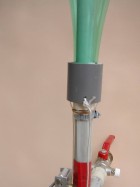 |
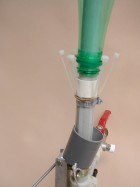 |
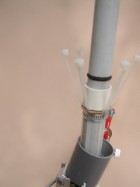 |
Claw system
It's a more mechanical evolution of the Clark cable Tie.
The waterproof part remains the same but we replace the cable clamps with metal claws.
To keep these claws closed, two solutions:
As for the cable Tie, a sheath covers them. It will suffice to lower this sheath to release the claws.
Of course it will be necessary to provide springs or elastics to help the claws to open.
Otherwise, we can do the system below:
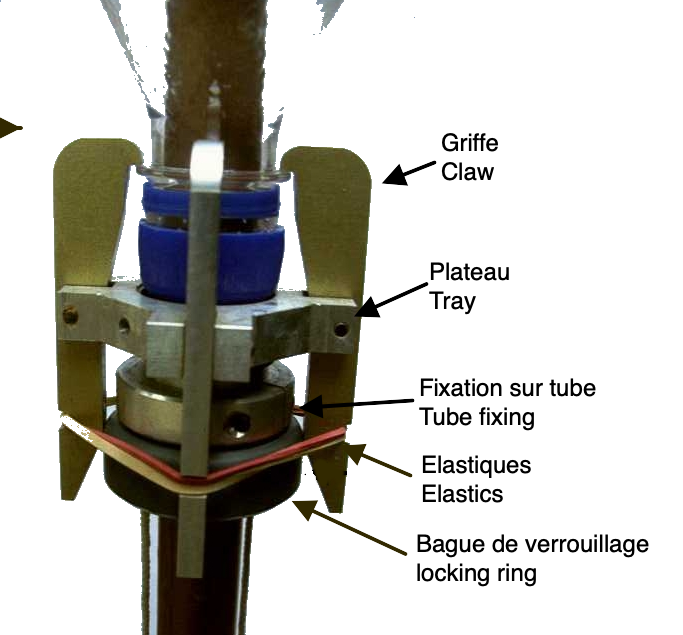
Just pull the locking ring down and the claws can be opened using the elastics and thus free the rocket.


